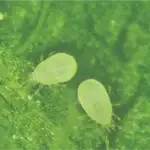Almonds
Overview
Almonds are grown primarily in the Riverland (South Australia), Sunraysia (Victoria) and Riverina (New South Wales) districts and some plantings are present in Western Australia.
Carob Moth and Carpophilus Beetle are the main almond pests and efforts are underway to develop Integrated Pest Management programs to control these pests.
Bryobia Mite (Bryobia rubrioculus) and Two-Spotted Mite (Tetranychus urticae) are important secondary pests in almond orchards and these can be managed effectively with biological controls.
Typhlodromus doreenae (Doreenae) is a native predatory mite that can be used to control Bryobia and Rust Mites in almonds.
Natural enemies of spider mites can assist in keeping the activity of pests such as Stethorus Beetle and Six-Spotted Thrips, low. The predatory mites Neoseiulus californicus (Californicus) and Typhlodromus occidentalis (Occidentalis) control spider mites in tree crops, especially during the warm and dry summers typical of the main production regions.
Signs you have Almonds pests
The key to controlling pests in your stone fruit crop effectively, is detecting them early and introducing beneficials at the right moment.
- Bryobia Mite cause leaf bleaching/yellowing and symptoms are exacerbated on orchard boundaries.
- Two-Spotted Mite cause webbing and defoliation, and can reduce tree growth the following year.
Products you can use to control Almonds pests
Biological Services sells a range of products to control pests among almonds.
Other tips for managing pests in your Almonds
Your local Biological Services consultant can provide year-round, professional crop monitoring and expert IPM program advice.
Get tailored advice for your commercial crop
To speak with one of our qualified consultants about your current commercial crop challenge or to learn about the benefits of the IPM maintenance and monitoring services we provide, contact us.





